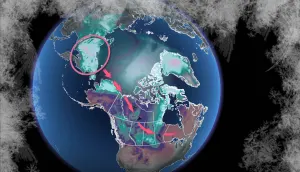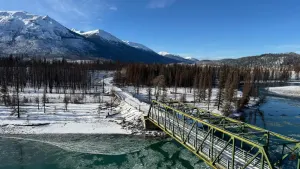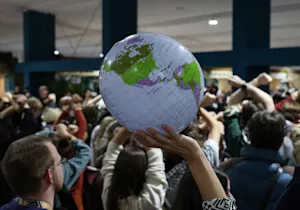
Why focusing on a hurricane’s category is downright dangerous
The wind scale doesn’t take into account all of a storm’s life-threatening hazards
The streets in eastern Texas resembled rivers the week the downpours started. Rising waters forced thousands of people out of their homes while officials scrambled to launch boats to rescue those who couldn’t leave in time.
Some communities saw more than 1,000 mm of rain during the disaster, which remains Texas’ worst flooding in living memory.
Hurricane Harvey wasn’t even a hurricane anymore by the time it unleashed its catastrophic floods in the Houston metropolitan area.
Monstrous hurricanes are often reduced to a single category as they swirl toward land. “The Category 4 storm will approach landfall…” is a simple and easy way to convey the maximum winds within a storm in the easiest way possible.
But reducing a storm to its category and focusing solely on the storm’s winds can have terrible consequences in the face of a multitude of other hazards.
DON'T MISS: Tropical systems don’t need a name to trigger devastating floods
The Saffir-Simpson scale focuses on winds
Meteorologists use the Saffir-Simpson Hurricane Wind Scale (SSHWS) to categorize and communicate a hurricane’s maximum sustained winds in an easy-to-relate way.

The winds of a Category 1 hurricane are much lower than those of a scale-topping Category 5 behemoth. Major hurricanes are ones rated Category 3 or higher on the scale, packing maximum sustained winds of 178 km/h or stronger.
Even a low-end hurricane has winds stronger than your average severe thunderstorm during the heat of the summer. They can cause widespread tree and power line damage, blocking roads and knocking out utilities for days or even weeks after the storm. Stronger hurricanes lead to more severe and longer-lasting effects.
Every hazard is important
Destructive winds are only part of the equation when it comes to a landfalling hurricane.
Coastal residents certainly have to worry about damage to homes, trees, and power lines when a strong storm swirls ashore. But there are plenty of other threats to worry about as a system draws near.
Flash flooding from heavy rain is the single biggest killer in any tropical system. Even an unnamed tropical disturbance can pose a major hazard if it stalls over land. This flash flooding can occur hundreds of kilometres inland from the point of landfall, hammering communities that may have thought they were safe from the storm’s impacts.
MUST SEE: Tropical tornadoes are a hidden danger in landfalling storms
The strong dynamics within a storm can also produce tornadoes. Tropical tornadoes are a sneaky hazard when storms hit land. Sometimes, full-blown tornado outbreaks are possible as a hurricane hits the area.
Rip currents are an ever-present hazard at the coast even if a storm stays far offshore. Rip currents form when waves hit the beach head-on, creating swift channels of water that pull back out to sea. Swimmers often get caught in these currents and become exhausted trying to fight them, sometimes succumbing to the waves after growing too tired to tread water.
Storm surge relies on more than just strong winds
Storm surge is another life-threatening hazard that accompanies any landfalling tropical cyclone. A storm surge is seawater pushed inland by the combined effects of a storm’s persistent winds and the system’s low air pressure.
LEARN MORE: What is a hurricane storm surge, and why is it so dangerous?
A constant wall of powerful winds blowing against the ocean’s surface forces water to push against the coastline, surging inland like a slow-motion tsunami. Storm surges can rise several metres in as little as an hour, inundating coastal communities that are already straining against the storm’s winds, rain, and tornadoes.

Hurricane Sandy's wind field in October 2012. (NASA's Goddard Space Flight Center/Scientific Visualization Studio)
Flooding from storm surges is responsible for a significant number of fatalities in strong hurricanes as they roar ashore.
44 of the 61 people who died as a direct result of Hurricane Ian’s strike on southern Florida in 2022 died in storm surge flooding, according to a post-analysis published by the U.S. National Hurricane Center.
A storm’s ability to generate a dangerous storm surge isn’t always tied to its category. Many factors play into this threat for coastal flooding, including a storm’s size and the shape of the coastline itself.
Hurricane Sandy was a low-end Category 1 storm when it slammed into the northeastern U.S. in October 2012.
The storm’s historic size, however, allowed it to push a destructive storm surge into New Jersey and New York City. Making matters worse is that the shape of the coastline acted like a funnel to enhance the water rise in spots.
Tropical systems are multifaceted threats as they approach land. Winds are an important factor in terms of damage and lingering effects, but a storm’s category only tells one chapter of a complicated story.
Header image of Hurricane Harvey flooding in Houston courtesy of U.S. Customs and Border Patrol via Flickr.











